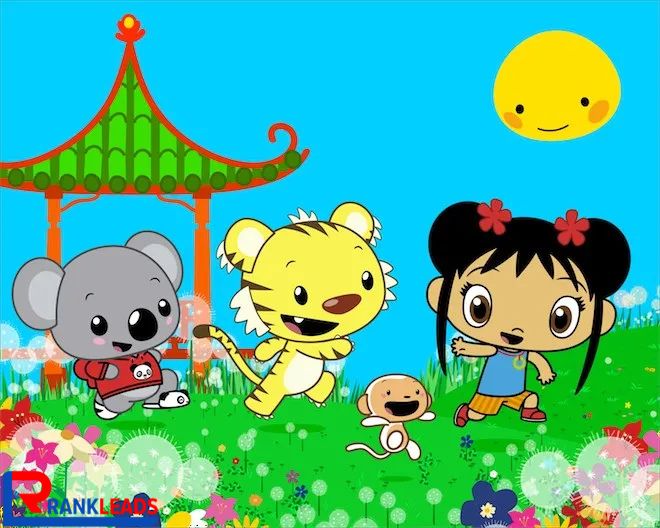Ni Hao, Kai-Lan is an animated children’s television series that has captured the hearts of many young viewers around the globe. Produced by Nickelodeon and created by Karen Chau, this beloved show combines entertainment with education, introducing kids to Chinese culture, language, and values. With its colorful animation, memorable characters, and engaging storylines, Ni Hao, Kai-Lan has become a staple in households seeking diverse, multicultural programming for children.
In this article, we will dive deep into the world of Ni Hao, Kai-Lan, exploring its characters, themes, educational impact, and why it remains a fan favorite even years after its original run.
What is Ni Hao, Kai-Lan?
Ni Hao, Kai-Lan premiered on Nickelodeon in 2008 and ran for two seasons until 2011. The show is targeted at preschool-aged children, aiming to teach basic Mandarin Chinese words and phrases while promoting social and emotional development. The phrase “Ni Hao” itself translates to “hello” in Mandarin, setting the tone for a show that introduces viewers to Chinese culture in a fun and accessible way.
The central character, Kai-Lan, is a cheerful and curious six-year-old girl who embarks on exciting adventures with her animal friends. Along the way, Kai-Lan helps her friends solve problems and navigate emotions, teaching valuable life lessons to viewers.
The Main Characters

The charm of Ni Hao, Kai-Lan lies in its memorable and diverse cast of characters. Each character brings unique traits and perspectives, making the show relatable and engaging for children.
Kai-Lan
Kai-Lan is the main protagonist. She is a bright, adventurous, and compassionate girl who loves exploring the world around her. Kai-Lan serves as a role model, teaching children about kindness, empathy, and cultural appreciation. Her ability to communicate in both English and Mandarin makes her a relatable bridge for young audiences exploring a new language.
Rintoo
Rintoo is a tiger with a bold and energetic personality. He often represents traits like courage and confidence but sometimes struggles with impulsivity. Through Rintoo’s experiences, children learn about the importance of patience and teamwork.
Tolee
Tolee is a koala who adores pandas and loves singing. He is the most cautious and thoughtful member of the group, often reminding viewers about the value of careful planning and consideration for others.
Hoho
Hoho is a playful and sometimes mischievous monkey. As the youngest character, he often displays traits of curiosity and excitement but also learns about the importance of listening and respecting others.
Lulu
Lulu is a magical pink rhino who can fly with the help of her balloon. She adds an element of whimsy to the show and represents creativity and problem-solving.
Educational Themes in Ni Hao, Kai-Lan

Introduction to Mandarin Chinese
One of the standout features of Ni Hao, Kai-Lan is its emphasis on teaching basic Mandarin Chinese. Each episode introduces simple words and phrases, helping children expand their vocabulary in a fun and interactive way. Words are repeated several times, ensuring retention, and are often paired with visual cues for better understanding.
For example, children might learn how to say “thank you” (谢谢, xiè xiè) or “friend” (朋友, péng yǒu) during an episode. These lessons not only familiarize young viewers with the language but also encourage an appreciation for linguistic diversity.
Emotional and Social Development
The show places a strong emphasis on emotional intelligence and social skills. Episodes often center around common childhood challenges, such as sharing, managing frustration, or working together as a team. Kai-Lan and her friends model healthy ways to express feelings and resolve conflicts, offering practical lessons that children can apply in their own lives.
Cultural Awareness
Through its vibrant settings, traditional music, and cultural references, Ni Hao, Kai-Lan introduces children to Chinese traditions and values. From celebrating Chinese New Year to learning about the importance of family, the show fosters an appreciation for cultural diversity.
Why Ni Hao, Kai-Lan Stands Out
Interactive Format
One of the key reasons for the show’s success is its interactive approach. Kai-Lan frequently breaks the fourth wall, engaging directly with viewers by asking questions or inviting them to participate in problem-solving. This format keeps young viewers actively involved and reinforces the lessons being taught.
Positive Role Models
The characters in Ni Hao, Kai-Lan serve as excellent role models for children. Kai-Lan’s kindness, Rintoo’s bravery, Tolee’s thoughtfulness, and Hoho’s curiosity provide relatable examples of positive behavior.
Beautiful Animation
The show’s animation is colorful, vibrant, and designed to appeal to young children. The visual style is both engaging and calming, making it easy for children to follow along with the storylines.
The Impact of Ni Hao, Kai-Lan
Language Learning
For many children, Ni Hao, Kai-Lan serves as an introduction to Mandarin Chinese. The exposure to a second language at a young age can have long-term cognitive benefits, including improved memory, problem-solving skills, and cultural empathy.
Promoting Multiculturalism
In a world that is increasingly interconnected, teaching children to appreciate different cultures is more important than ever. Ni Hao, Kai-Lan helps young viewers develop a global perspective by celebrating Chinese traditions and encouraging curiosity about other cultures.
Building Emotional Intelligence
By addressing common childhood emotions and conflicts, the show equips children with the tools they need to navigate their own social interactions. The emphasis on empathy and understanding helps foster healthier relationships and emotional resilience.
Episodes Worth Watching
While every episode of Ni Hao, Kai-Lan has its charm, a few stand out for their educational value and memorable storylines:
- “Kai-Lan’s Carnival”: This episode introduces viewers to the concept of teamwork and the importance of including everyone in activities.
- “Celebrate with Kai-Lan!”: A delightful episode centered around Chinese New Year, teaching children about cultural traditions and the significance of family.
- “Rain or Shine”: This episode focuses on problem-solving and staying positive even when things don’t go as planned.
Fun Activities Inspired by Ni Hao, Kai-Lan
Parents and educators can extend the lessons of through fun, interactive activities:
Mandarin Practice
Encourage children to practice the Mandarin words and phrases they learn from the show. Create flashcards or use simple games like matching words to pictures.
Celebrate Chinese Holidays
Organize a mini Chinese New Year celebration at home or in the classroom. Include activities like making paper lanterns, cooking traditional dishes, or learning a lion dance.
Emotional Role-Playing
Reinforce the emotional lessons from the show by role-playing scenarios. For example, practice sharing or resolving a pretend conflict, using the techniques modeled by Kai-Lan and her friends.
Where to Watch Ni Hao, Kai-Lan
Although the show originally aired on Nickelodeon, it is still accessible through various streaming platforms. Parents can find episodes on services like Amazon Prime Video, iTunes, or the Noggin app. DVDs of the series are also available for purchase online.
Conclusion
Ni Hao, Kai-Lan is more than just an entertaining children’s show; it’s a tool for cultural education, language learning, and emotional growth. By introducing young viewers to Mandarin Chinese and Chinese traditions while addressing universal themes of friendship and empathy, the show leaves a lasting impact on its audience.
Whether you’re a parent seeking enriching content for your child or an educator looking for resources to teach multiculturalism, offers something valuable for everyone. With its engaging stories, lovable characters, and meaningful lessons, this timeless show continues to resonate with audiences worldwide.






